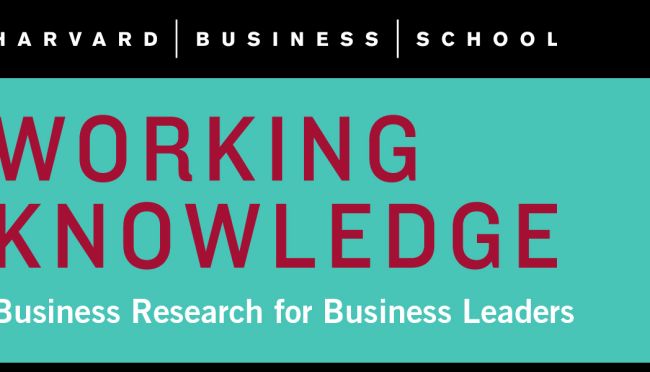Design →
→

- 27 Feb 2019
- Research & Ideas
The Hidden Cost of a Product Recall
Product failures create managerial challenges for companies but market opportunities for competitors, says Ariel Dora Stern. The stakes have only grown higher. Open for comment; 0 Comments.

- 20 Dec 2017
- Lessons from the Classroom
How to Design a Better Customer Experience
With the help of LEGO bricks, Stefan Thomke helps business executives discover how design principles can serve as building blocks to create a great customer experience. Open for comment; 0 Comments.

- 05 Jul 2017
- Working Paper Summaries
Designing an Agile Software Portfolio Architecture: The Impact of Coupling on Performance
This study deepens our understanding of how firms can better design software portfolio architectures to improve their agility. The authors examined data from over 1,000 different software applications and 3,000 dependencies between them. They found that indirect measures of coupling and dependency have more power in predicting IT agility than direct measures.

- 14 Jun 2017
- Working Paper Summaries
Minimizing Justified Envy in School Choice: The Design of New Orleans' OneApp
TCC (Top Trading Cycles) and DA (deferred acceptance) are the two main algorithms for priority-based resource allocation. In 2012, the New Orleans school system tried to use TCC for school assignments, but dropped it after one year. The authors of this paper compared data from New Orleans and Boston in order to review designs and algorithms for better school assignment systems.
- 20 Jul 2016
- Research & Ideas
Airplane Design Brings Out the Class Warfare in Us All
Air rage is often blamed on overcrowded flights and postage stamp-size seats, but researchers Michael Norton and Katherine A. DeCelles find another culprit: resentment toward passengers in first class. Open for comment; 0 Comments.

- 23 Nov 2015
- Working Paper Summaries
Self Control and Commitment: Can Decreasing the Liquidity of a Savings Account Increase Deposits?
John Beshears and colleagues find evidence to show commitment accounts can help would-be savers with self-control problems.
- 15 Nov 2012
- Research & Ideas
Funding the Design of Livable Cities
As a burgeoning global population migrates to the world's urban centers, it's crucial to design livable cities that function with scarce natural resources. John Macomber discusses the critical connection between real estate financing and innovative design in the built environment. Open for comment; 0 Comments.
- 19 Oct 2011
- Research & Ideas
Designing Cities for a Sustainable Future
The city of the past is likely not the city of the future—climate change is bringing an end to the traditional model. Harvard Business School faculty are thinking along with government leaders and business practitioners about how to create sustainable places to live and work. From HBS Alumni Bulletin. Open for comment; 0 Comments.
- 19 Feb 2008
- Research & Ideas
Radical Design, Radical Results
Consumers appear increasingly willing to make purchase decisions based upon their emotions about a product—how it looks, or sounds, or makes them feel using it. But the traditional design process based on user experience goes only so far in creating radical innovation. Harvard Business School visiting scholar Roberto Verganti is exploring the new world of "design-driven innovation." Key concepts include: Innovative product design is risky, but provides competitive advantage to companies that understand how a product "speaks" to customers. Little theory exists to point the way for companies that want to create a successful design strategy beyond the traditional user-driven design process. Companies often adopt one of three design strategies: launch and see, see and launch, or wait and see. Innovators may often be in the see and launch category. Innovators understand and build off each other's ideas better than the imitators do. Closed for comment; 0 Comments.

The Ferrari Way
Secretive sports car maker Ferrari opens up to Stefan Thomke about how it has bucked industry trends to achieve success. Open for comment; 0 Comments.